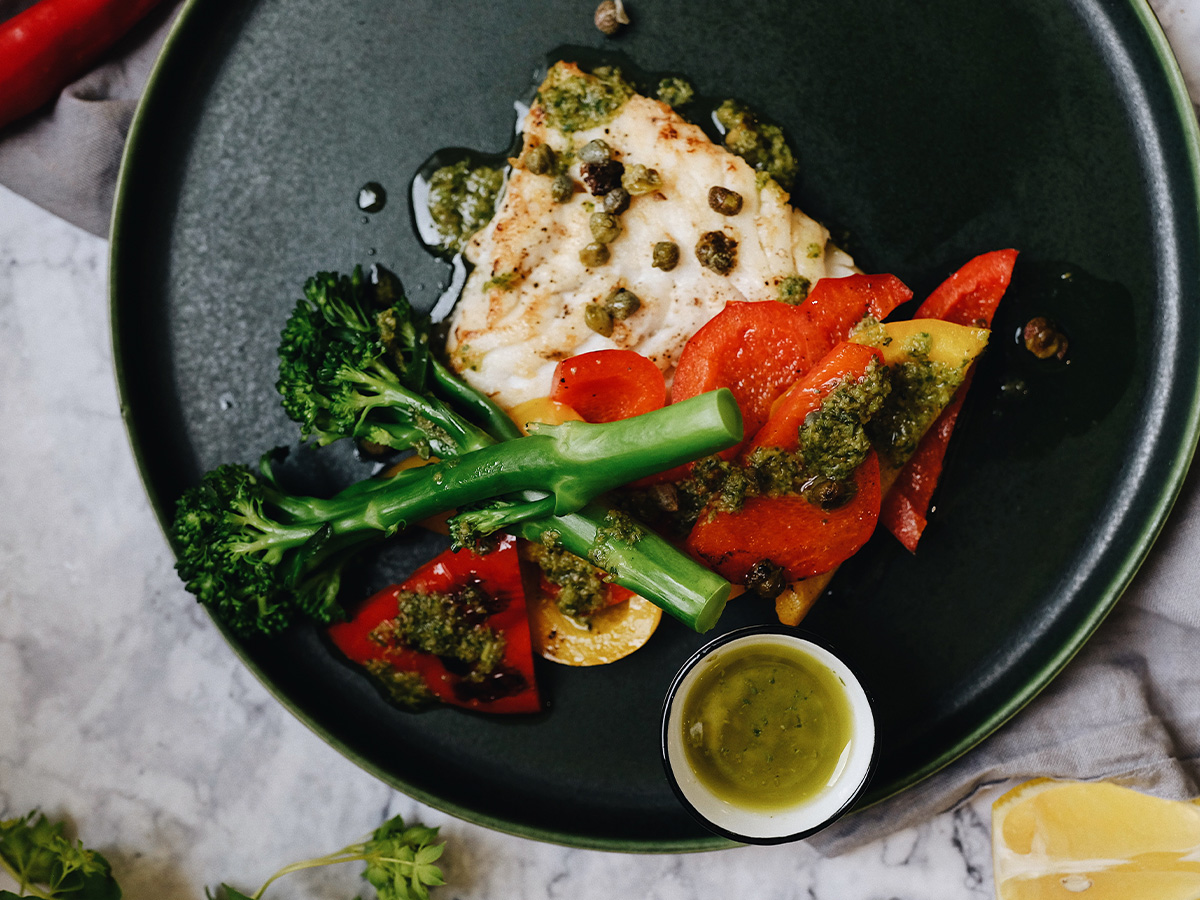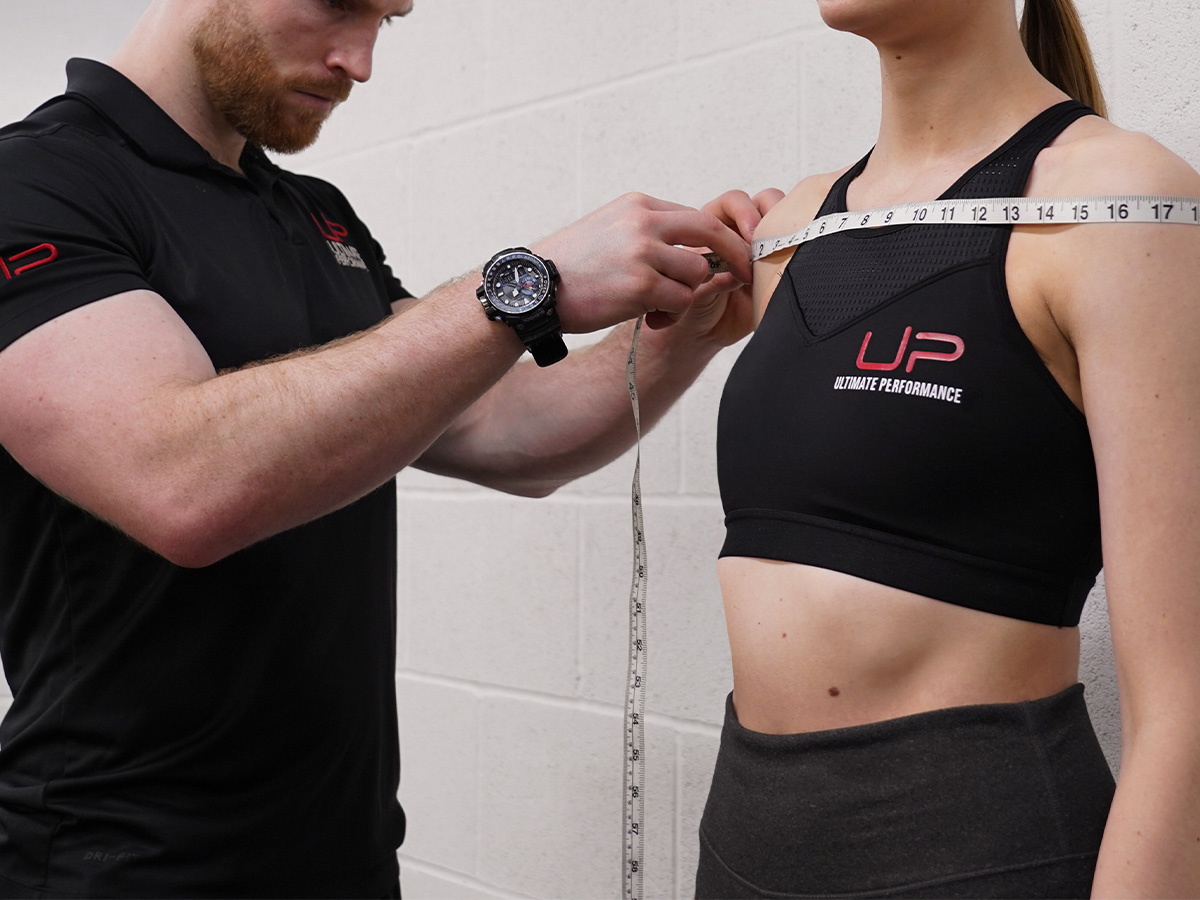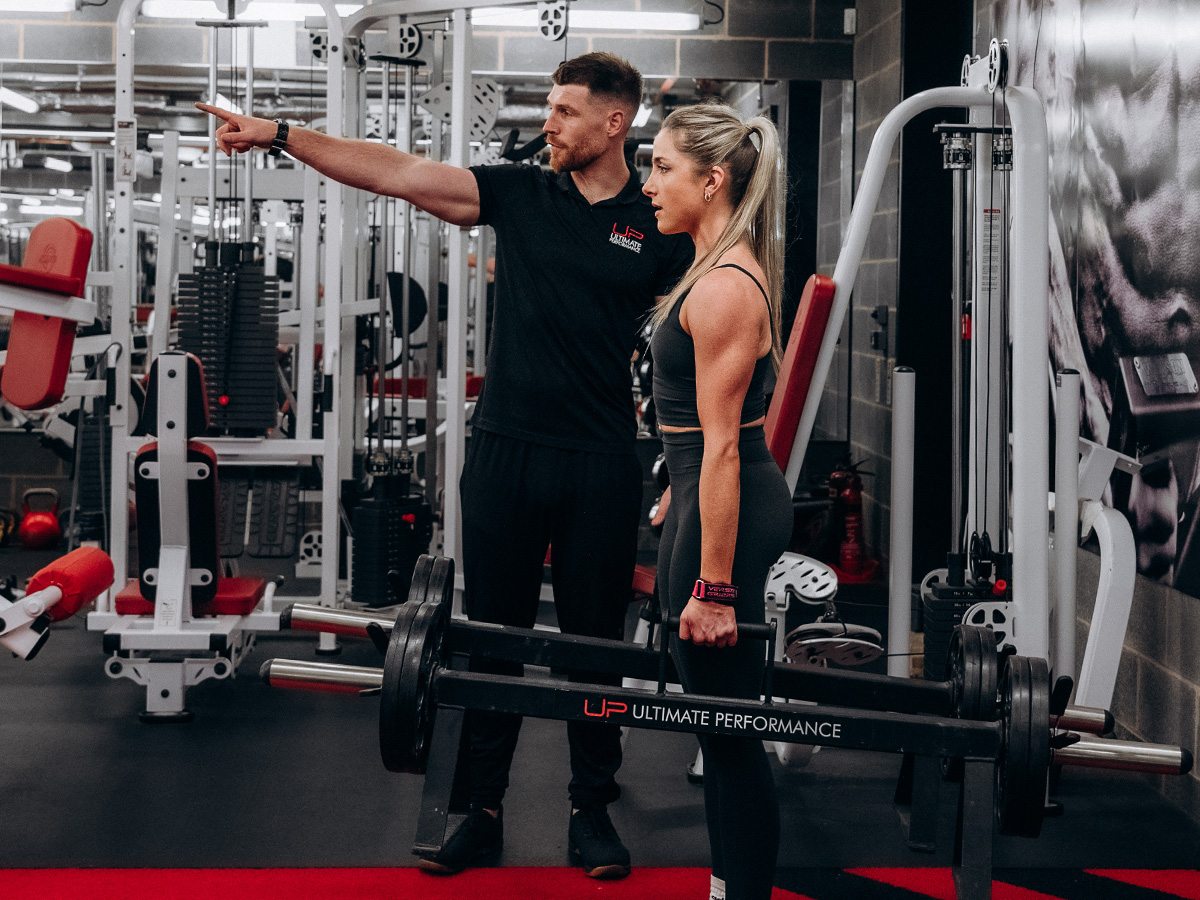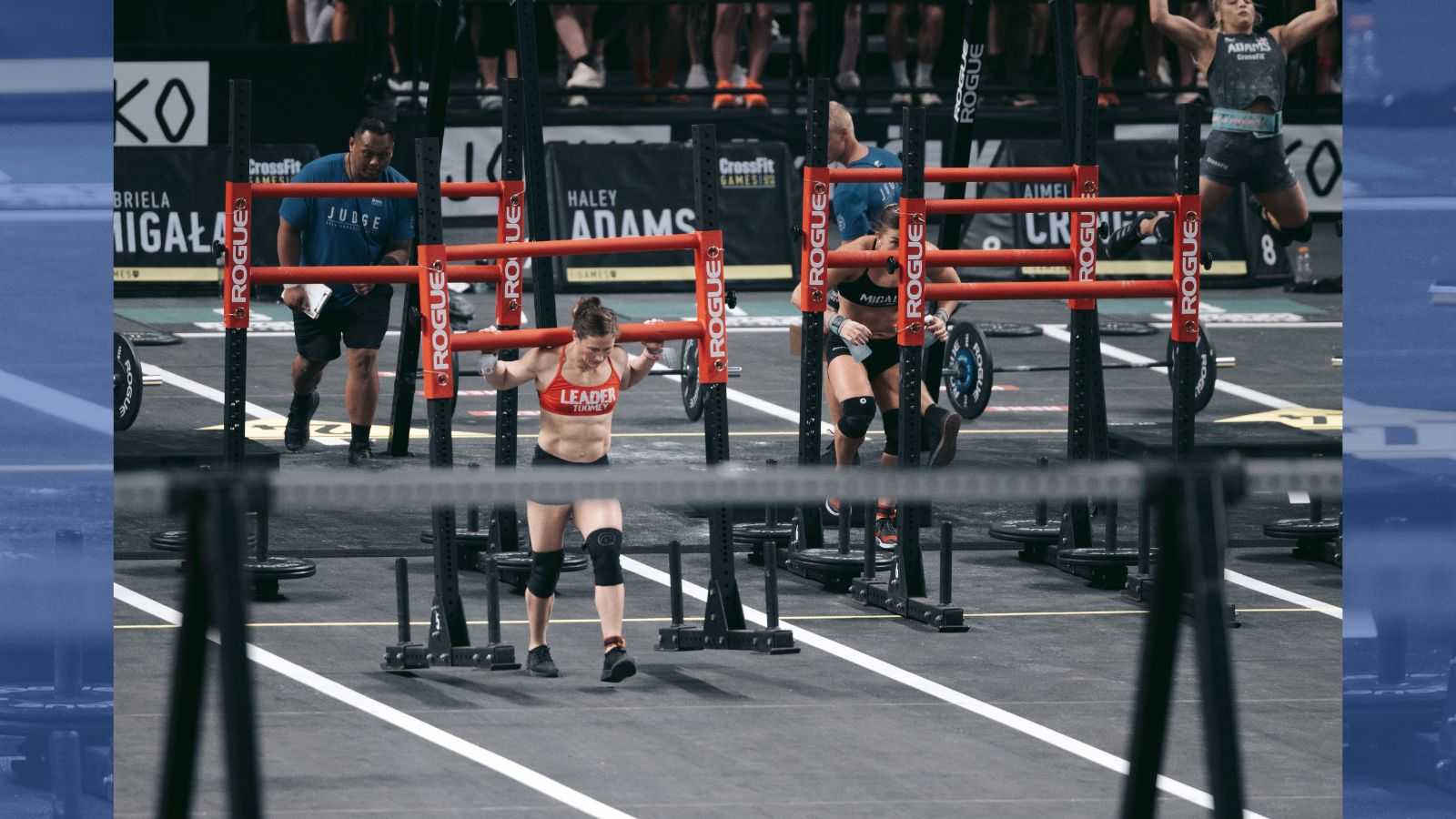Table of Contents
ToggleSummer is the best time of year to show off all the hard work you’ve been putting in at the gym.
Starting early gives you enough runway to drop body-fat safely and sustainably, without extreme crash diets and the inevitable weight gain rebound that follows.
If you’re behind schedule or haven’t started yet, don’t worry – we have a step-by-step plan to make sure you’re shredded by the time summer starts.
The eight steps below use the exact same principles our personal trainers at Ultimate Performance gyms worldwide use to help thousands of clients achieve dramatic body transformation results.

Step 1: Set a goal which keeps you accountable
Before you start, set a clear goal. You need to know what you want to achieve, by when, and most importantly, why. Knowing your “why” is the single most important element of goal-setting and motivation.
Going through a body transformation isn’t easy – when you’re dieting and training hard and fatigue sets in, your “why” is what stops you from reaching for the biscuit tin or hitting snooze instead of doing your morning cardio. Your “why” could be anything from “I want to look great on the beach” to something deeply personal that has triggered your desire for change.
For example, Corrie, a mother-of-two, came to U.P. with a powerful motivation – she wanted to reclaim her health and confidence after years of putting herself last. That driving purpose helped her lose 20kg in just 14 weeks and feel like “the woman she always aspired to be.” Whatever your motivation, write it down, pin it up on the fridge, and use it as a reminder whenever you feel yourself starting to slip.
Once you know your “why,” set a goal using the SMART framework (Specific, Measurable, Achievable, Relevant, Time-bound). Don’t be vague – saying you want to “lose some body fat” is too generic and will lead to an aimless plan and zero progress. A better goal would be something like:
“I want to lose 9kg (20 lbs) of body fat in the next 12 weeks (specific, measurable, achievable, time-bound) so I can have a six-pack on the beach in Ibiza (relevant).”
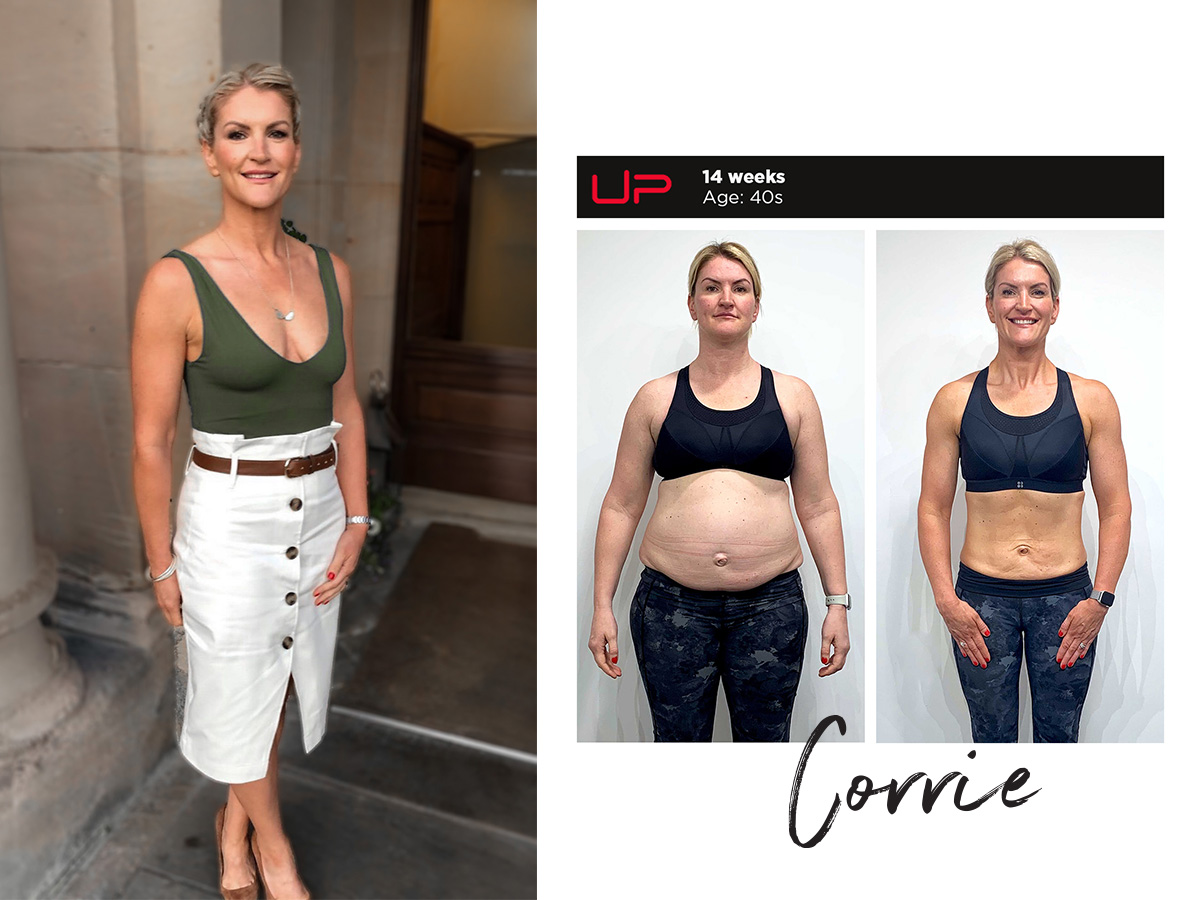
Step 2: Clean up your diet
The nutrition side of fat loss is straightforward: consume fewer calories than you burn, and you will lose weight. While that sounds simple on paper, consistent execution is the hard part – which is why we simplify nutrition for our clients to maximise adherence.
If you’re new to this and want a jump-start on fat loss, we often begin with a short low-carb “bootcamp” phase. (For all the details, see our blog on why the low-carb bootcamp works so well.) The basic premise is to follow a diet high in protein and vegetables, with moderate healthy fats, for about 10-21 days.
Why does this work so well? There are a few key reasons:
Quick initial results
In an initial two-week low-carb period, our clients often drop 2-4% of their body fat. Seeing the scale weight go down and your physique tighten up in the first couple of weeks is great for motivation – it creates excitement and gives you a psychological “buy-in” to stick with the plan for the weeks ahead.
Simple to follow
The biggest benefit of a low-carb kick-start is its simplicity. As long as you maintain a calorie deficit and hit your protein targets, a low-, moderate-, or high-carb diet will all produce fat loss. What really matters is consistency – the best diet is the one you can stick to. Cutting out most carbs temporarily streamlines your food choices and meal prep.
Many of our clients are busy professionals with no time to micromanage meals, and they often find that a simple low-carb template is easiest to prepare and sustain, at least in the early stages when building new habits.
Improved insulin sensitivity
A short period of low-carb eating can significantly improve your insulin sensitivity – in simple terms, it helps your body use carbohydrates more efficiently for energy rather than storing them as fat. After a couple of weeks with lower carbs, when you do reintroduce carbs later, your muscles will soak them up more effectively.
Carbs aren’t the enemy, but if you’ve been following a typical Western diet, chances are you’ve been eating far too many of them. A brief reset primes your body to handle carbs better going forward.
Once you’ve cleaned out your fridge and stocked up on quality proteins (meat, fish, eggs) and plenty of vegetables, the next step is figuring out how much of each you should consume daily. To keep it straightforward, focus on the following four diet fundamentals:
1. Prioritise protein
Diets higher in protein help preserve muscle while you’re losing fat in a calorie deficit and lead to better body composition outcomes. You should also prioritise protein because it’s the most satiating macronutrient – keeping you feeling fuller for longer so calorie restriction ‘feels easier to manage.
Set a daily protein target. A good rule of thumb is:
For men, aim for 2.6g per kg (1.2g per lb) of bodyweight
For women, aim for 2.2g per kg (1.0g per lb) of bodyweight
Great protein sources include chicken, turkey, fish, lean beef, eggs, Greek yogurt, and protein shakes.
2. Eat your veggies
Include an abundance of green, fibrous vegetables with each meal. Vegetables like broccoli, kale, spinach, asparagus, and zucchini are nutrient-dense and very low in calories. They’ll fill you up and provide essential vitamins and fibre. Plus, seeing a big volume of food on your plate (thanks to veggies) can help psychologically when calories are reduced.
3. Include healthy fats
Each meal should have a source of healthy fat (especially during low-carb phases). Aim for roughly 0.4–0.5 grams of fat per pound of body weight per day as a starting point. Healthy fats from foods like avocados, olive oil, nuts, nut butters, and fatty fish will keep your hormones happy and promote satiety.
Remember: If you’re going low-carb, do not go low-fat at the same time – that’s a recipe for unsustainable dieting. Many people make the mistake of cutting carbs and fats, basically turning their diet into plain chicken breast and broccoli. You’ll end up running on fumes, feeling lethargic and ravenous, which often leads to binge eating and derailing progress. Include fats to make your meals satisfying.
4. Stay hydrated
Aim for about 3–4 litres of water per day. Often when people think they’re hungry or low on energy, they’re actually dehydrated. Ample water intake also helps with digestion and can reduce water retention as your body adapts to a new diet.
To illustrate a starting point, here’s an example day of eating for a busy 80kg (176lb) male at ~20% body fat who can only manage three solid meals per day:
- Meal 1: 4 whole eggs, 150g mixed greens
- Meal 2: 2 scoops of whey protein, 1 tablespoon of almond butter
- Meal 3: 200g chicken breast, 1 medium avocado, 150g mixed greens
- Meal 4: 2 scoops of whey protein, 1 tablespoon of almond butter
- Meal 5: 200g lean beef mince (10% fat), 150g mixed greens
Total calories: ~1,750 kcal
- Protein: ~226g
- Carbohydrates: ~45g (net carbs, excluding fibre)
- Fat: ~72g
Here’s a meal plan tailored for a 60kg (132lb) female at ~20% body fat, with three solid meals per day, designed for fat loss and body recomposition:
- Meal 1: 3 whole eggs, 100g mixed greens
- Meal 2: 150g chicken breast, 1/2 medium avocado (~70g) 100g mixed greens
- Meal 3: 150g lean beef mince (10% fat), 100g mixed greens, 1 tbsp olive oil
- Meal 4: 1 scoop whey protein
Total calories: ~1,300 kcal
- Protein: ~150g
- Net Carbs: ~25g
- Fat: ~63g
Step 3: Start following a structured training plan
There are countless ways to set up a training plan, and the optimal routine varies from person to person (depending on lifestyle, stress, schedule, experience, etc.). However, most of our clients at U.P. train around three times per week in the gym with us. If you can only commit to three workouts a week, a full-body training program is a great way to begin.
We often utilise a German Body Composition (GBC) style program for fat loss – this method alternates upper- and lower-body exercises with short rest periods to elevate your heart rate while lifting weights. A 2024 trial found that a full-body routine out-performed a split plan for fat loss in trained men.
The basic principles of a GBC-style program are:
- Train a full-body workout 3-4 times per week.
- Prioritise compound, multi-joint movements – squat, deadlift, row, and press variations.
- Keep rest intervals strict – about 30 to 60 seconds between sets.
- Stay in a moderate rep range – roughly 8–15 reps per set.8
- Alternate upper- and lower-body exercises, or opposing muscle groups in your paired ‘supersets’.
For example, you might rotate between two full-body workouts (Workout A and Workout B), taking a rest day after each session. This kind of program ensures you hit all major muscle groups frequently and with intensity. (And yes – these weight-training principles apply equally to men and women.)
Proper resistance training will not only expend more calories but also help you maintain or even muscle (even in a calorie deficit), which is crucial for achieving a lean, “shredded” look.

Step 4: Increase your ‘non exercise’ daily activity
If you have a reasonable timeline (more than about 6-8 weeks), you probably don’t need formal cardio right at the start – the calorie deficit from your diet and the stimulus of weight training will be enough initially. What you should do, though, is increase your general daily activity level.
Look for opportunities to move more in your day-to-day life. Take the stairs instead of the lift. Walk or cycle for short trips instead of driving. Take phone calls while walking around instead of sitting at your desk. These little lifestyle changes can add up significantly over time.
In fact, we often set a daily step target for clients as a simple way to boost Non-Exercise Activity Thermogenesis (NEAT) – the calories you burn through everyday movements that aren’t ‘formal’ exercise. A good starting goal is aiming for 10,000 steps per day. Being mindful of a step target encourages you to stay active throughout the day. Increasing NEAT can make a big difference to your overall calorie expenditure and fat-loss progress, all without requiring extra formal workouts.
Studies also show that people who keep weight off long-term average close to 10,000 steps a day.

Step 5: Monitor your progress
To ensure you’re on track, you should measure your progress regularly. A good place to start is daily self-weighing. Studies show it is linked to greater weight loss and adoption of more healthy weight control behaviours compared to those who weighed themselves less frequently.
But it’s important to ‘triangulate’ this with other methods which show progress in other ways (because while scale weight can show that you’re getting lighter, it can’t show where that weight loss is coming from – whether it’s water, muscle or fat.)
When working with clients at U.P., we rely on a number of key indicators to be able to gauge progress and results. You can use some of these methods too to measure your own progress:
- Body weight: Weigh yourself on the scales frequently (3–7 times per week) and track the weekly average to smooth out daily fluctuations. Make sure you weigh yourself under the same conditions (e.g. every morning, wearing minimal clothing, after using the toilet, and before you eat or drink).
- Photos: Take progress photos (front, side, and back) every 2–4 weeks to visually assess changes.
- Measurements: Use a tape measure to record circumferences (at least your waist, chest, and thigh) every couple of weeks, being careful to measure the same place each time.
- Body fat: If possible, measure body fat using callipers or a reliable body composition scan periodically.
Whatever tracking methods you use, be consistent with them. Consistent measurements give you the most accurate feedback – and it’s that feedback which will determine how you adjust your diet, training, or cardio plan moving forward.
Step 6: Adjust your plan based on your progress
Once you’ve built some momentum, the next step is knowing when (and how) to adjust your plan. But here’s the truth: if you’re making progress, you don’t need to change anything. Don’t fix what isn’t broken.
Too many people start tweaking their diet or training just because they’ve been doing it for a few weeks. But that’s arbitrary. At Ultimate Performance, we don’t make changes unless progress stalls – whether that’s your weight plateauing, your lifts stagnating, or your recovery and energy dipping. The only way to know that is by tracking your progress properly.
Use data. Track your scale weight daily (and look at weekly averages). Track your training in a logbook. Track your calories and macros. Note down your sleep, hunger, and cravings. These give you the full picture. If your weight’s dropping, your lifts are going up, and you’re feeling good – keep going.
When progress does stall, here’s how to tweak intelligently:
Adjusting your diet
After an initial low-carb phase, you can start reintroducing carbs – not based on a set timeframe, but based on feedback from your body. If your energy is flagging, your recovery is suffering, or your hunger is increasing, carbs can help.
Start small. Add a serving of starchy carbs post-workout (40–60g) or with your evening meal. You might also include one higher-carb refeed meal per week. This is especially helpful when you’re leaner, more insulin sensitive, and more likely to use those carbs effectively.
If you do add carbs, reduce fats slightly to keep your overall calories on track. For example, swap some oils or nuts for sweet potato or rice.
Progressing your training
Progressive overload isn’t something you ‘add in’ later – it’s the principle that underpins your training from day one. You should be aiming to ‘beat your logbook’ every session – more reps, more weight, more control, better range.
Stick with your program until you stop progressing. That might be four weeks. It might be eight. If you’re still making gains, squeeze every last drop out of it before you make any tweaks to the plan.
When progress stalls, don’t throw the whole program out and start afresh. You don’t want to have to learn all-new exercises from scratch. It’s always better to make simple swaps or adjustments – using similar exercises or movements. This might be going from a flat dumbbell press to a bench press, or a pulldown to a weighted pull-up. Or moving an exercise from the B-series to the A-series for more focus. You might drop your reps and increase the weight (e.g. lifting in the 6-8 range rather than the 10-12 range, but with a heavier weight). But the core goal is the same: keep progressing.
If you’re more advanced or bored, you could increase training frequency or move to an upper/lower or push/pull split. But don’t do it just because the calendar says four weeks have passed – let your performance dictate when you move forward.
Adding cardio
Cardio isn’t essential from day one – especially if your weight’s coming down and you’re getting your steps in. But if fat loss stalls, a little extra activity can help.
Start simple:
- Add 1–2 brisk 30-minute walks per week (LISS)
- Include 1 short HIIT session (e.g. 15s sprint, 45s recovery, for 10–15 minutes)
That’s usually enough to get things moving again. But don’t let cardio rob you of recovery or compromise your lifting performance. Use it strategically – not as a punishment.
Trainer’s tip: If your lifts aren’t improving, your weight isn’t dropping, and you’re feeling tired, hungry, or flat – that’s a sign it might be time to tweak. Just make sure those tweaks are based on your data, not guesswork.
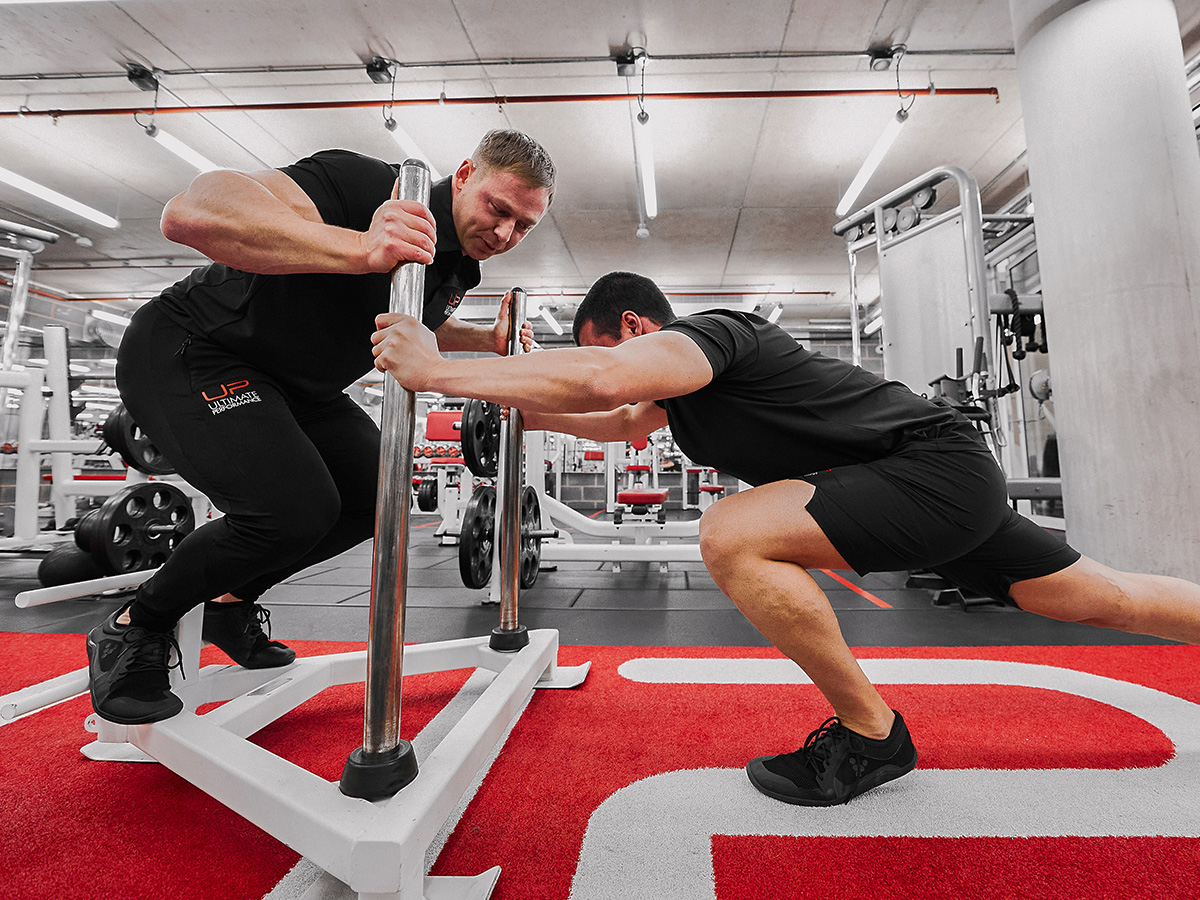
Step 7: Make smarter decisions
Beyond the initial stages, the specific tweaks you’ll need to make will depend on how your body responds – everyone is a bit different. To help you stay on track and know what changes to make as you progress, we’ve compiled some further reading on common questions and challenges you might face:
- Fasted cardio
- How to progress your workouts
- Reasons you’re not losing fat
- Best workout for body recomposition
- How often you should do cardio
- How often you should workout
- Back to basics on protein
- Back to basics on carbs
- Back to basics on fat
- Back to basics on cardio
These resources (from our blog) will guide you through fine-tuning your plan – whether it’s breaking a fat-loss plateau, optimising your diet, or adjusting your training regimen for continued results.
Step 8: Stay consistent
You can have the most elaborate plan in the world, but it won’t work without consistency. If you want to be shredded for summer, you must stay consistent day in and day out. This means adjusting the balance of your life so that training and healthy eating remain top priorities even when things get busy. A body transformation isn’t easy – and the number one factor that determines a client’s success is always how badly they want it and how consistently they put in the work.
Our client Stephen had been dipping in and out of casual gym routines for 20 years without much to show for his efforts. When he finally adopted a structured, progressive weight-training plan at U.P., he was stunned by the results over 14 weeks – going from 92kg to 75kg and 8% body fat. “This is the leanest and strongest I’ve ever been – and I’m 42, stronger than I was at 19,” he told us. The difference was training properly and consistently, not just going through the motions. 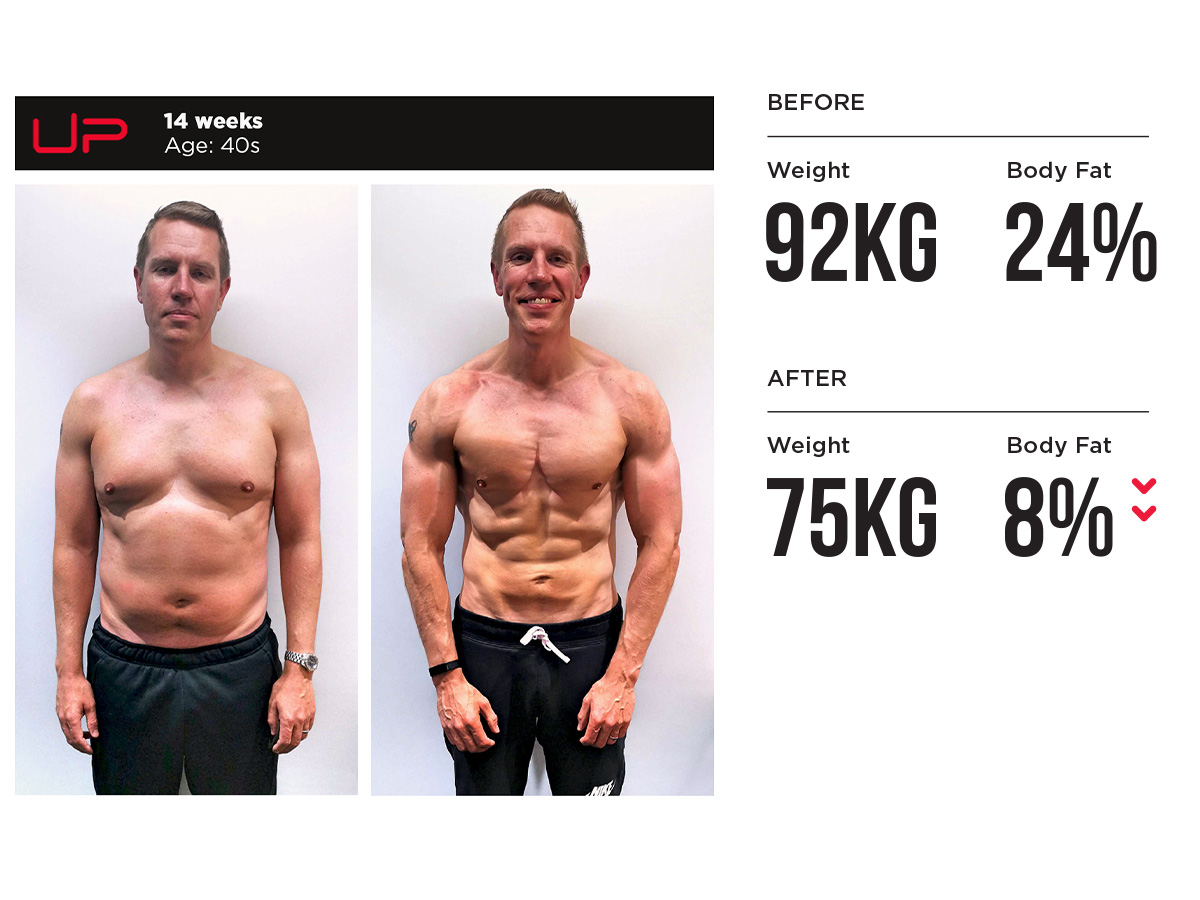
Learn more about the results you can achieve and start your own transformation program with the world’s leading personal trainers.
The post 8 Tips to Get Shredded for Summer appeared first on Ultimate Performance Blog.
Source link







